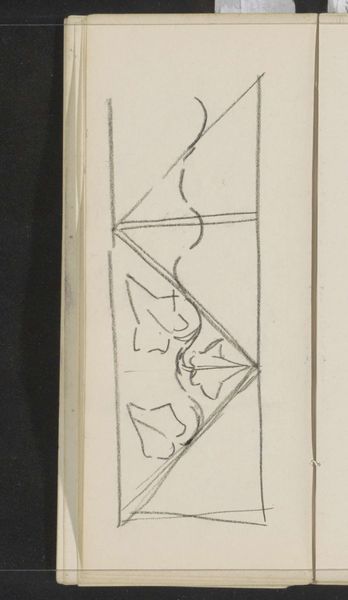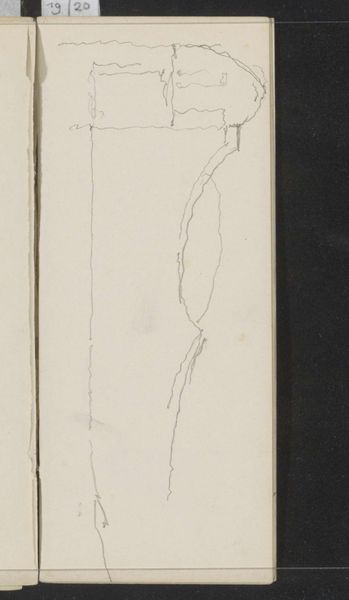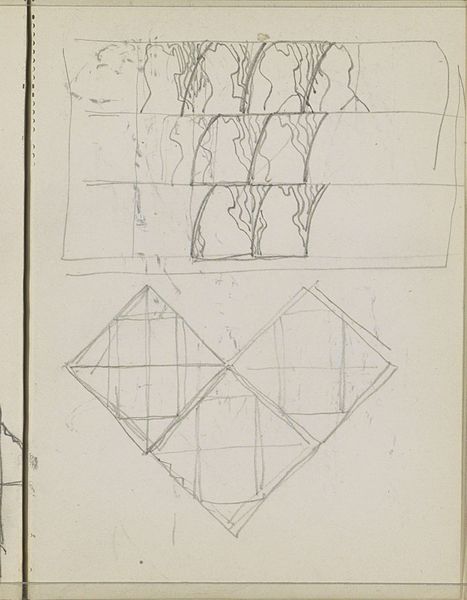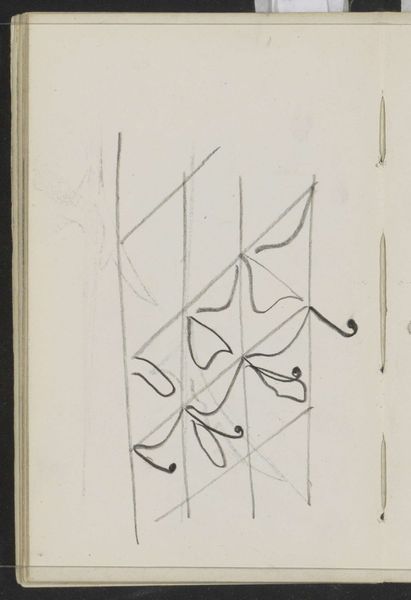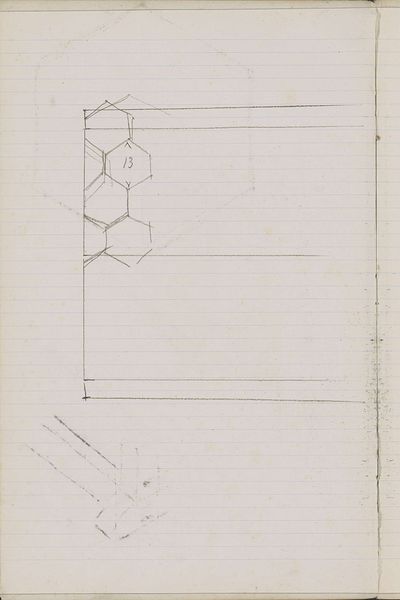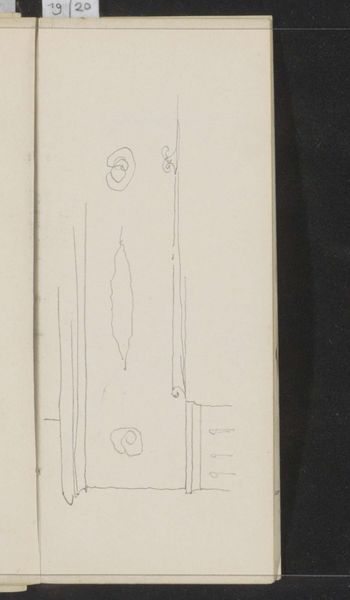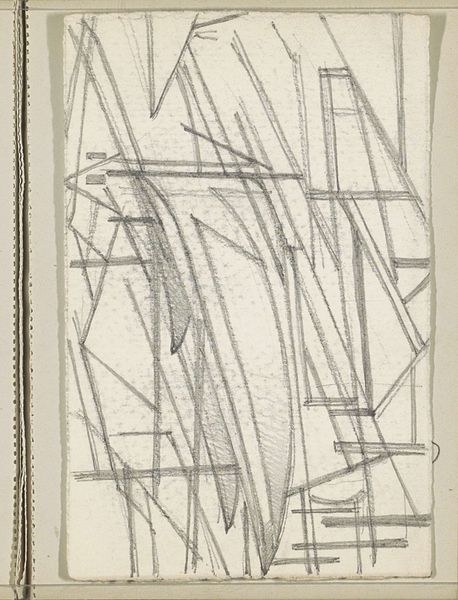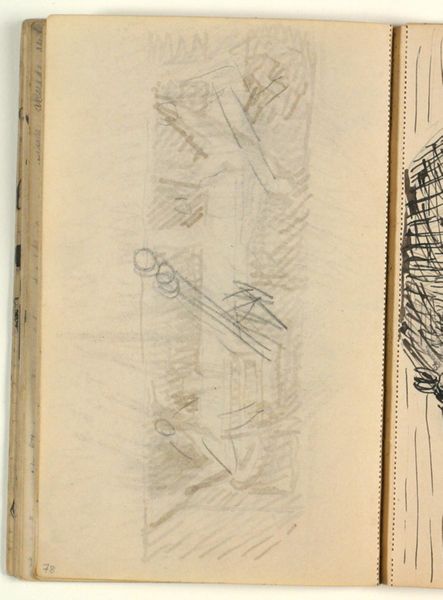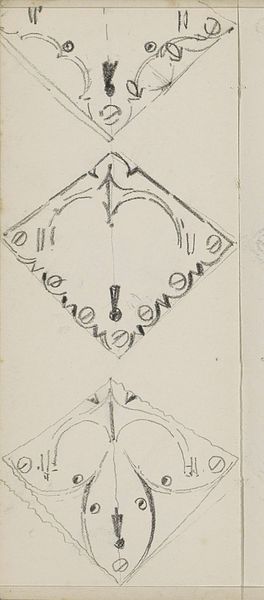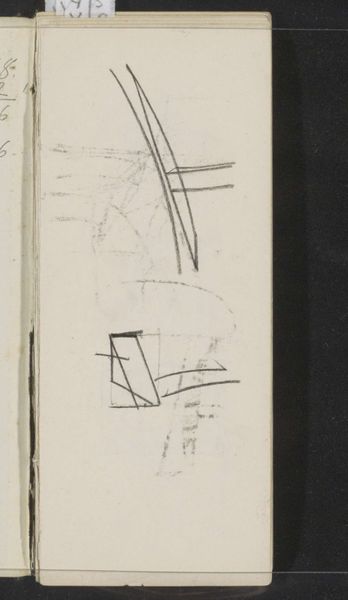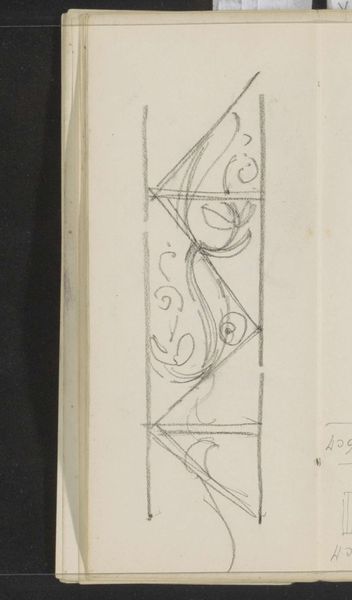
drawing, paper, pencil
#
drawing
#
amateur sketch
#
art-nouveau
#
sketch book
#
incomplete sketchy
#
hand drawn type
#
paper
#
personal sketchbook
#
sketchwork
#
geometric
#
detailed observational sketch
#
pencil
#
sketchbook drawing
#
sketchbook art
#
initial sketch
Copyright: Rijks Museum: Open Domain
Editor: So, we're looking at "Ontwerp voor een venster met honingraatpatroon," roughly translated, Design for a Honeycomb Window, by Gerrit Willem Dijsselhof, made sometime between 1876 and 1924. It’s a pencil drawing on paper, and it seems to be a preliminary sketch. What immediately strikes me is how raw and process-oriented it is. What can you tell me about the materiality and social context of this piece? Curator: Precisely. The inherent value lies not in a finished "art object," but rather in the documentation of design's production. Notice the explicit grid Dijsselhof creates and its intersection with naturally occurring geometric patterns. The materials - pencil, paper – these were relatively accessible tools, hinting at the democratization of design at this time, linked with larger shifts towards industrial production. Editor: So, by focusing on accessible materials like pencil and paper, Dijsselhof potentially democratized design, contrasting with traditionally “high art” forms that utilize materials accessible only to certain individuals? Curator: Absolutely. Art Nouveau, with which Dijsselhof is associated, aspired to integrate art into everyday life. These patterns weren’t meant to be rarefied objects in galleries, but replicable designs potentially available for mass production. Think about the social implications of making appealing design patterns available beyond elite circles. Were designs like these really accessible or consumed predominantly by certain classes, despite intention? Editor: That's a good question. I suppose the materials allowed for broader possibilities of creating, but consumption patterns are perhaps where accessibility was restricted. Looking at it from this perspective of the production means versus the impact… that is actually fascinating! Curator: Exactly. We must examine the labor and social forces at play, acknowledging that the 'accessibility' offered by readily available material might not translate into genuine social equity. Considering these nuances reframes how we interpret these artistic efforts.
Comments
No comments
Be the first to comment and join the conversation on the ultimate creative platform.
